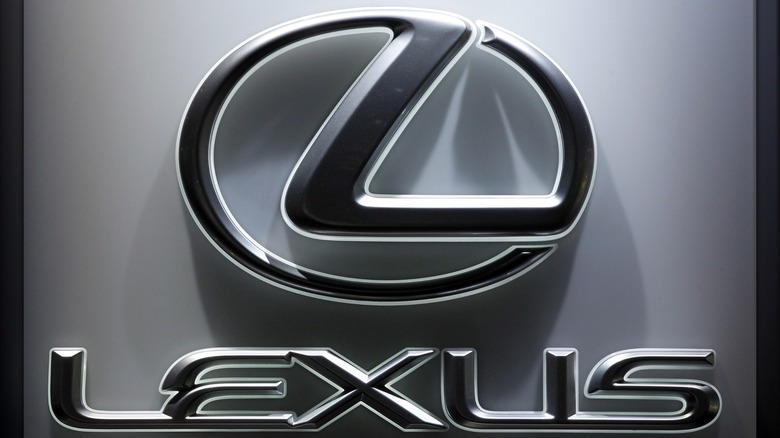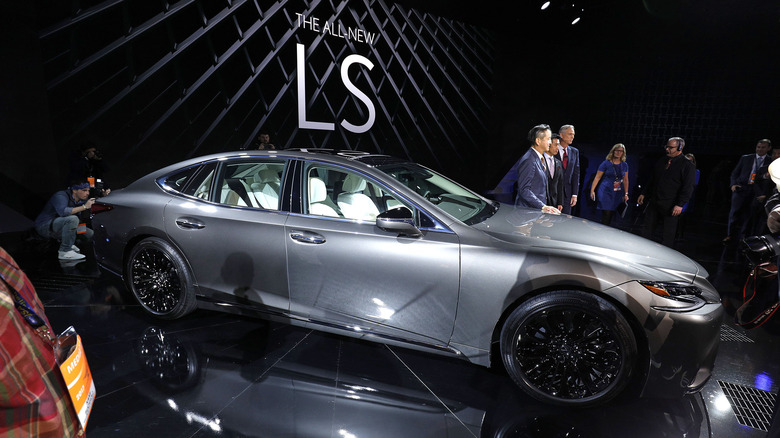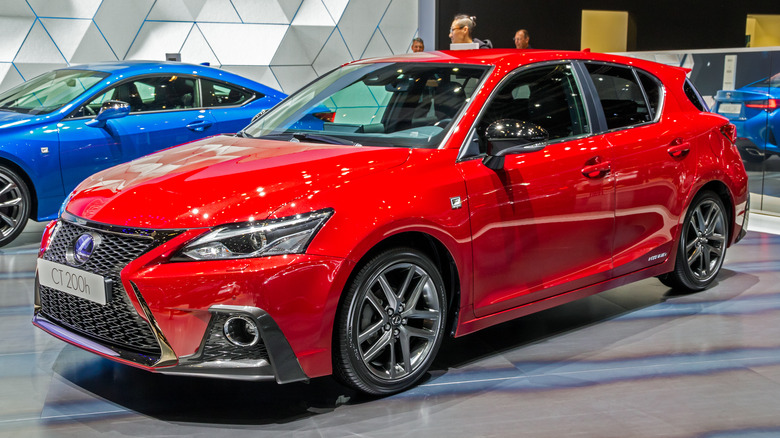Here's What Lexus' IS, LS, GS And CT Abbreviations Mean
The automotive industry is replete with a bewildering array of esoteric acronyms, from ICE (internal combustion engine) to EV (electric vehicle) to BSW (blind spot warning) and ABS (anti-lock braking system). Car makers just love to slap their wares with complicated model numbers and abbreviations that make most consumers' minds swim amidst a broth of alphabet soup. More than 135 years after cars first rolled into our lives, acronyms are still part and parcel of every vehicle on the road today.
Thankfully, Lexus – the luxury division of Japanese carmaker Toyota — took a more practical approach to naming its cars. At least when compared to the overtly complicated numbering system used by Porsche. Sure, there are still dozens to remember, but at least there's some method to the naming convention madness.
Before we dive into the meanings of some of the two-letter model abbreviations, let's start with what Lexus represents. The symbol itself is the Greek "lexicon," which stands for language. The word combines the Latin "luxus" and the French "luxe," which basically mean the same thing — luxury, wealth, excess, extravagance, indulgence, etc.
Despite the persistent myth, the company's advertising division insists that Lexus does not mean "Luxury Export To The United States" or any such iteration, nor does it have any other specific meaning. It actually just signifies a "luxurious and technological image."
So, what about the IS, LS, GS, and CT designations in the model names?
Luxury and intelligence
Lexus launched its first car in 1989 with the LS ("Luxury Sedan"), and Toyota marketed it as "the finest luxury car in the world." It ought to be — it took a team of 60 designers, 1,400 engineers (grouped into 24 teams), 2,300 technicians, and more than 200 support personnel to create it.
After 973 prototypes, it finally settled on the 4.0-litre V8 engine found in the first-gen LS. It sat on special hydraulic-pneumatic mounts and, in a "world's first," used aluminum cam followers to reduce inertia in the valvetrain. The LS (internally called "Circle F") was precisely the pinnacle of progressive technology Toyota/Lexus wanted to showcase. It began a legacy that continues today and is still considered one of the most reliable models Lexus ever built.
The first generation IS launched in Japan in 1998 as the Toyota Altezza. Remember, Lexus was an exclusive export brand until mid-2005. It then rolled out in Europe as the IS 200 the following year and as the IS 300 in the United States in 2001.
Designed by Nobuaki Katayama, who worked on the company's Le Mans and rallying teams, the IS was a dynamic, smaller sports car marketed to younger drivers and was meant to compete with BMW's 3-Series, Mercedes' C-Class, and Audi's A4. As such, the IS stands for "Intelligent Sports."
Grand creativity
Much like the IS, the GS began as a high-performance Toyota saloon in Japan called the Aristo in 1991. If this mid-size car looks European, that's because it was styled by none other than Italdesign (under the direction of Giorgetto Giugiaro himself).
Two years later (1993), it was exported to North America, Europe and select Asian countries as the new Lexus GS 300, where the GS stood for "Grand Sedan." Seeing as it was the second most prestigious model after the LS and smack dab in the middle of its saloon line-up, it became known as a spryer, more dynamic performance saloon while still capable of providing the luxury of the higher-end LS sedans.
Last but not least, we come to the CT. When Lexus unveiled the LF-Ch concept at the 2009 Frankfurt Motor Show, it took people by surprise because it had never attempted to build a compact, five-door hatchback before. When it released the production model a year later, it was quickly identified as not just the company's first premium compact vehicle with a full hybrid powertrain but the world's.
The affordable "entry-level" vehicle raised the bar on the class while using its latest Lexus Hybrid Drive technology to provide better gas mileage and lower emissions. It was, to say the least, creative, and thus the reason CT stands for "Creative Touring."


